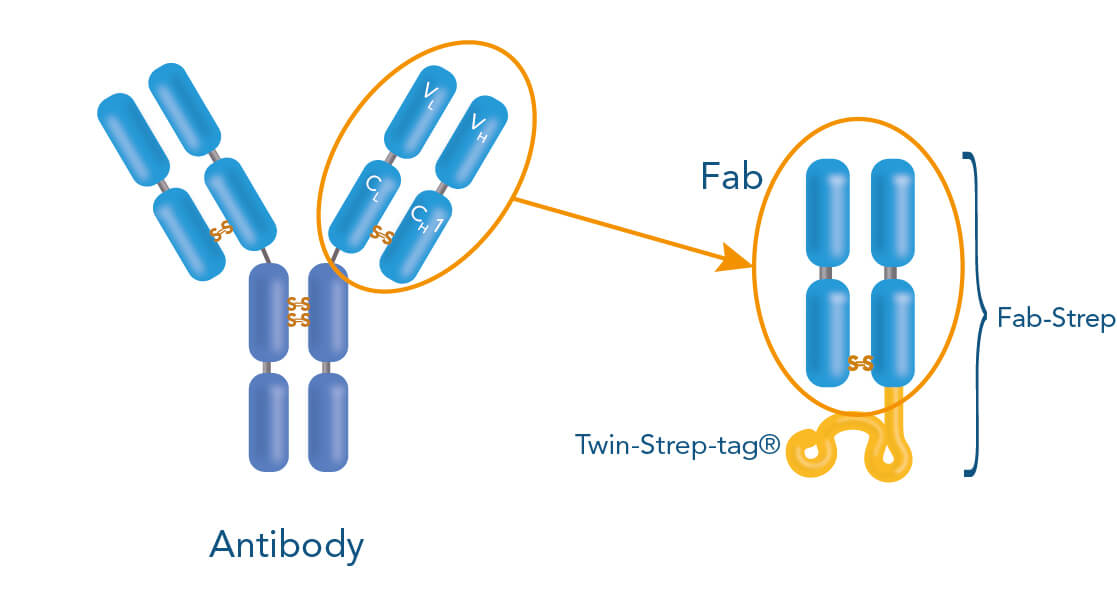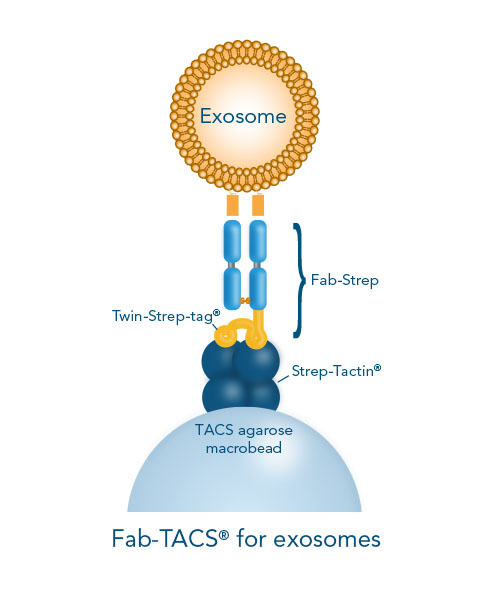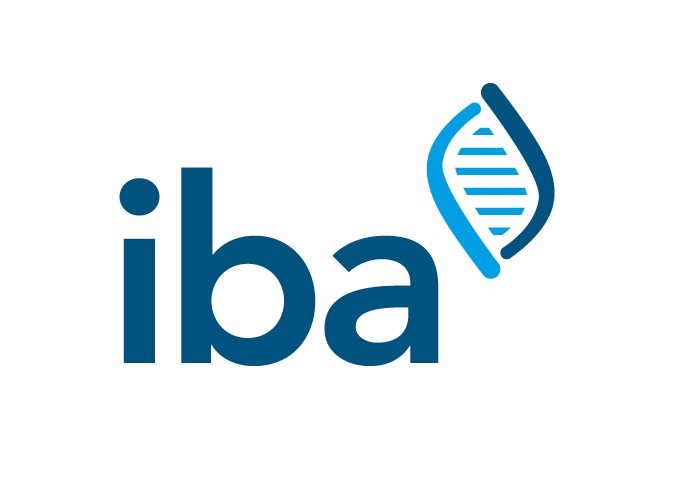Strep-tag® technology for exosome isolation

Fab-Streps are derived from conventional antibodies. They are modified to generate a low affinity to the target and fused to a Twin-Strep-tag®.
The Strep-tag® technology allows label-free exosome isolation according to their surface markers via affinity chromatography. This approach is called Fab-TACS® for exosomes, describing the underlying principle: Traceless affinity exosome isolation. “Fab” deviates from antibody-derived Fab fragments that are used in this method. The Fabs are fused to a Twin-Strep-tag® (Fab-Streps) and specifically bind to a surface marker of exosomes.
The Twin-Strep-tag® facilitates the binding of Fab-Streps to Strep-Tactin®, an engineered streptavidin. For isolating exosomes using affinity chromatography, Fab-Streps of choice are loaded into columns that contain agarose macrobeads coated with Strep-Tactin®. Subsequently, the columns are suitable for isolating exosomes from different samples such as cell culture supernatant or plasma.
The key feature of the Fab-TACS® for exosomes principle is the same as for our cell isolation approaches: the removability of all labeling reagents. Two factors contribute to this feature: the low affinity of Fab-Streps and the reversible binding of the Twin-Strep-tag® to Strep-Tactin®.
The Fab fragments only weakly bind to their targets. To achieve sufficient binding to exosomes, multimerization of Fab-Streps on Strep-Tactin® inside the column is necessary to increase the avidity. Biotin addition reverses this binding. Due to its higher affinity, biotin replaces the Twin-Strep-Tag® on Strep-Tactin®, causing the release of Fab-Streps and the elution of exosomes. Due to their low affinity, Fab-Streps spontaneously dissociate from the exosome surface, which results in a completely label-free exosome population. Exosomes are only minimally affected during the isolation procedure and suitable for downstream applications such as Western Blot, nanoparticle tracking analyses (NTA) and cell culture experiments.
Find application examples of Fab-TACS® exosome isolation here.
Find exosome isolation products in our web shop.
Fab-TACS® for exosomes approach

Exosomes are isolated by loading surface marker-specific Fab-Streps on Strep-Tactin® coated agarose inside columns.
Fab-TACS® exosome isolation workflow
The Fab-TACS® approach presents an alternative immunoaffinity-chromatography method with low affinity Fab fragments that capture and release exosomes without affecting their functions. Based on the reversible binding properties of the Strep-tag® technology, the Fab fragments target the surface proteins of exosomes and spontaneously dissociate from the vesicles following the addition of biotin. Isolated exosomes are completely label-free and functional, suitable for various downstream applications.
Exosome research is a very fast emerging field that demands continuous development of new and improved exosome isolation technologies. In this interview, Dr. Jens Gruber discusses his research on exosomes and problems he faced during his studies. With the development of Fab-TACS® for exosomes, he successfully overcame previous limitations, highlighting the importance of new technologies for high quality exosome research.
